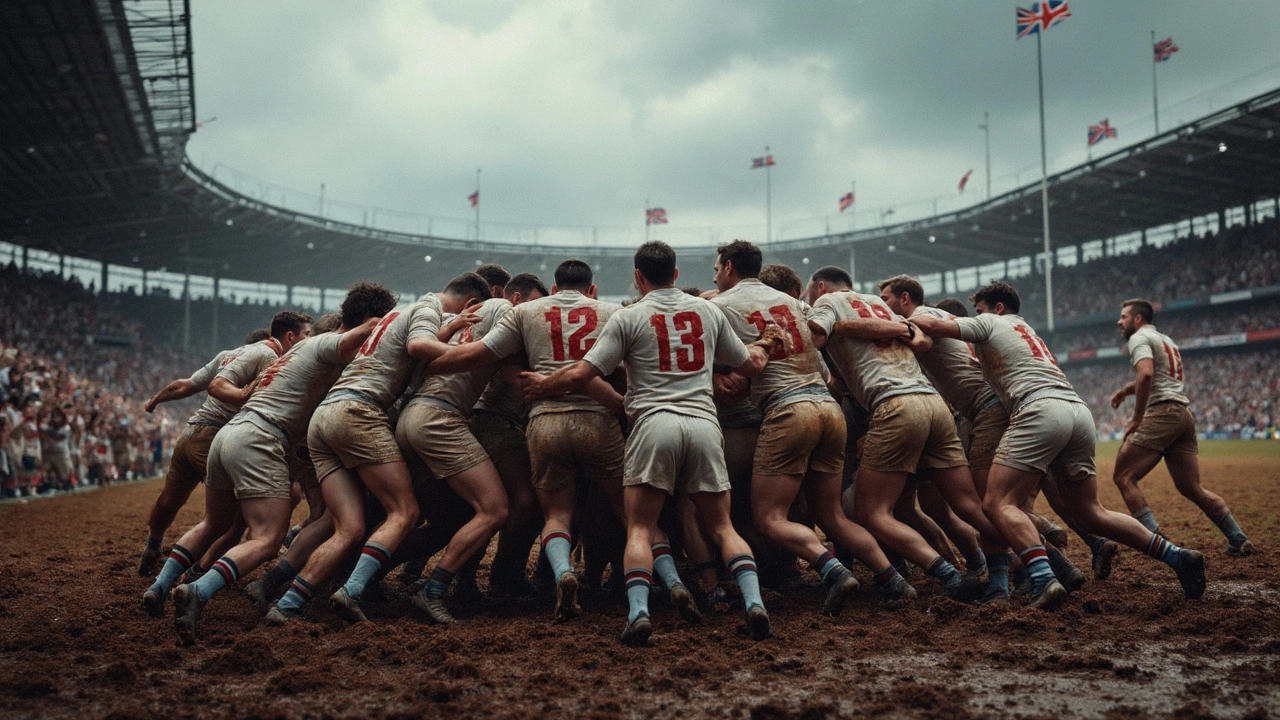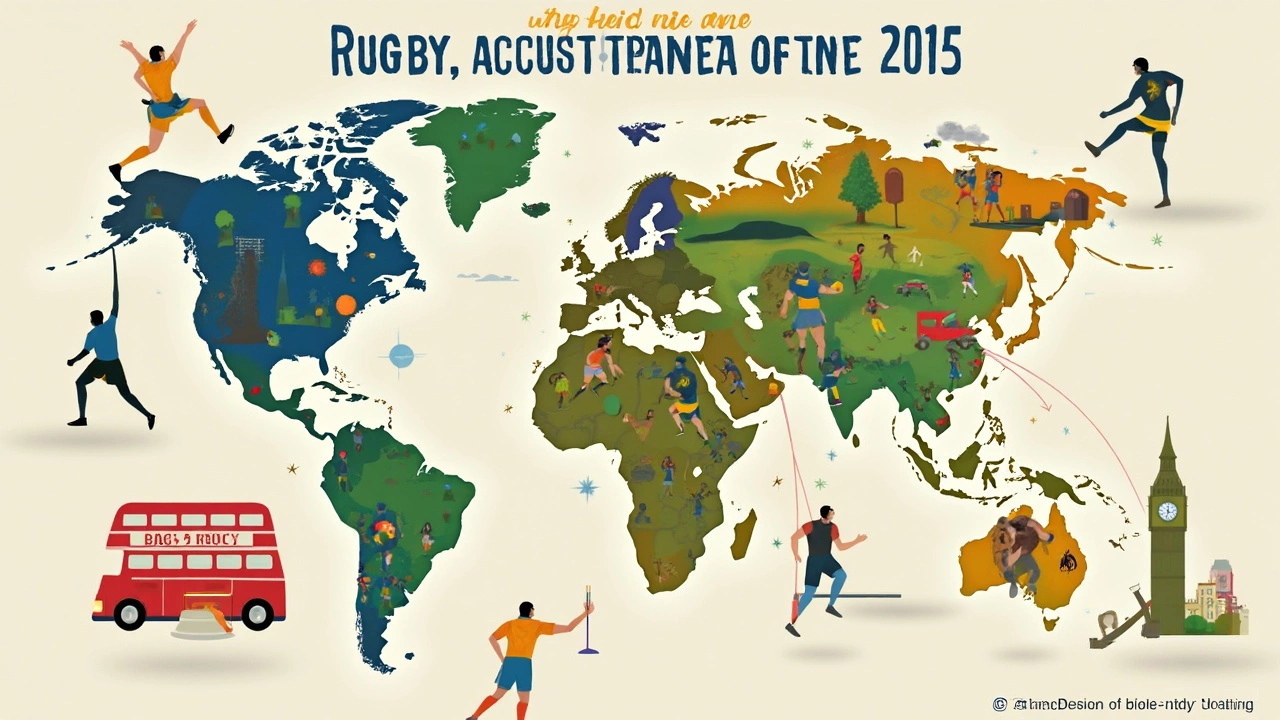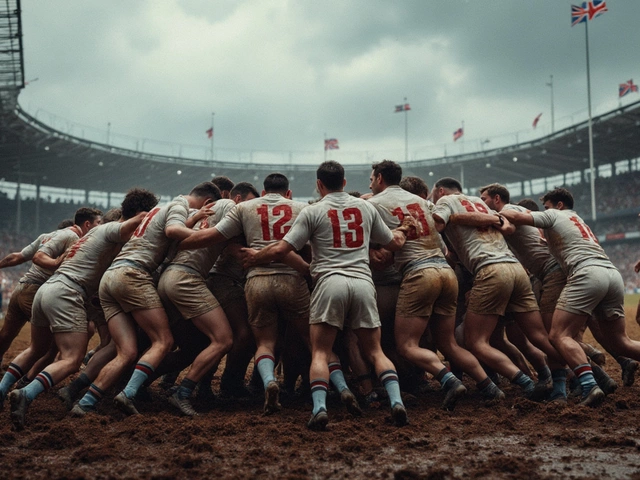Why is Rugby Not That Popular? Exploring the Reasons Behind Its Low Profile

Ever wondered why rugby isn’t everywhere you look, the way soccer or basketball seem to be? You’d think a sport where players smash into each other for 80 minutes would grab more headlines. But if you flip through your local cable guide or check the main sports apps, rugby barely gets a mention, especially outside the traditional hot spots.
Part of the problem is how tightly rugby is tied to its roots. It’s huge in places like New Zealand, South Africa, England, and a couple of Pacific islands, but if you’re sitting in the US, Germany, or China, odds are you don’t know the rules—or even have easy access to games or schedules. Try finding consistent rugby fixtures in those countries. Not so easy, right?
Another big hurdle is competition with sports that already dominate the scene. In North America, American football eats up attention. In India, it’s all about cricket. Rugby just struggles to break through, especially when schools and local clubs aren’t pushing it to the kids. And if you’re not exposed to a sport as a kid, you’re less likely to care about watching it as an adult.
- Cultural Roots and Barriers
- Rugby vs. Other Sports
- Media Coverage and Exposure
- Where Rugby Thrives
- How to Dive Into Rugby Fixtures
Cultural Roots and Barriers
If you dig into the DNA of rugby, you’ll notice it never really set roots in a lot of countries, and that has a huge effect on how popular it is today. In places like England, New Zealand, and South Africa, rugby is more than a sport—it’s almost a way of life. The game is played in schools, talked about at home, and passed down generations. In these countries, the rules are as familiar as family recipes. But outside these strongholds, rugby just doesn’t show up in everyday life.
The thing is, when a sport doesn’t get a foothold in schools, it rarely booms nationally. Take the United States for example: kids grow up playing American football, basketball, or baseball. Very few see rugby balls in their gym class, so even if they stumble onto a match later, the whole thing feels foreign. Same story in most of Asia and parts of Europe.
Some of this goes back to colonial history and culture clashes. Rugby spread in former British colonies—so you see it thrive in Australia, New Zealand, South Africa, and bits of the Pacific Islands. But it never really stuck anywhere France, Argentina, and Georgia are the only big exceptions outside the British sphere.
If you look at numbers, this divide pops out clearly:
| Country | Estimated Registered Players (2024) |
|---|---|
| New Zealand | 156,000 |
| South Africa | 651,000 |
| England | 382,154 |
| USA | 109,000 |
| India | 58,000 |
Now compare those numbers to football or cricket. The gap is huge. These countries barely move the needle for rugby in global stats.
What’s more, rugby has sometimes been seen as a sport for elites or private schools, especially in England and France. That put off a lot of regular folks from even trying it. When you don’t see people like you playing a sport, you’re way less likely to give it a shot.
Language barriers and a weird set of game rules add another hurdle. For someone with no background, figuring out scrums, line-outs, and rucks can feel like decoding alien tech. Lots of folks just prefer games they can get right away.
Bottom line: rugby’s cultural roots are deep, but surprisingly narrow. Unless you grow up somewhere with a strong rugby presence, you probably see it as that confusing, rough sport that shows up once every four years during the Rugby World Cup.
Rugby vs. Other Sports
If you stack up rugby next to sports like soccer, basketball, or American football, the differences jump out fast. The biggest one? Familiarity. In most countries, soccer dominates schoolyards and TV screens, while rugby barely gets a spot unless you’re in its few strongholds.
Let’s talk popularity in numbers. FIFA says more than half the world watched at least some of the last World Cup. Compare that with the 2023 Rugby World Cup, which had about 857 million viewers globally—decent, but still a fraction of soccer’s reach. Basketball, thanks to the NBA, is broadcast in over 200 countries. Rugby’s biggest events just don’t get that kind of airtime.
The numbers don’t lie:
| Sport | Estimated Global Fans | Main Strongholds |
|---|---|---|
| Soccer | 4 Billion | Worldwide |
| Basketball | 2.4 Billion | USA, China, Europe |
| Cricket | 2.5 Billion | India, UK, Australia |
| American Football | 400 Million | USA |
| Rugby | 500 Million | UK, New Zealand, South Africa, Australia |
Beyond the numbers, there’s the access problem. In the U.S., you can watch NFL games everywhere, but most people struggle to find a rugby channel unless it’s international finals time. Plus, the NFL and NBA market themselves like crazy, filling social feeds with highlight clips and star interviews. Rugby rarely does the same.
Part of why rugby struggles is the complexity of its rules versus something like basketball, where all you really need to know is 'score more points.' Rugby has scrums, lineouts, penalty tries—easy for longtime fans, but overwhelming for newcomers.
Basically, if you haven’t grown up with rugby or lived somewhere it’s a staple, you probably don’t pick it up later in life. It just doesn’t have that easy, universal entry point like kicking a soccer ball in the backyard or shooting hoops at the park.

Media Coverage and Exposure
When it comes to grabbing attention, rugby has a tough time compared to heavyweights like soccer or American football. Turn on a TV in most countries and you’re likely to see football, cricket, or basketball highlights before you ever spot a single rugby clip. Even online, finding streams or highlight reels from top rugby fixtures can feel like hunting for a needle in a haystack—unless you live in countries where rugby is part of the national identity, like New Zealand or Wales.
Let’s get into some numbers. Right after the 2019 Rugby World Cup final, about 857 million people worldwide tuned in throughout the tournament. That sounds pretty big until you compare it to the FIFA World Cup in 2022, which pulled in over 5 billion viewers during the entire event. Plus, in countries like the US, networks barely carry rugby, and if they do, matches are often buried behind paywalls or at odd hours because of time zones. This makes it hard to casually follow rugby and even harder for new fans to get hooked.
Social media isn’t really helping rugby go viral, either. While NBA and Premier League games dominate TikTok and Instagram feeds, rugby clips rarely break into the mainstream, unless it’s a monster hit or a wild sideline run. There’s just less buzz online, so the sport struggles to build the same global hype.
Major sports channels like ESPN or Sky Sports might show high-profile internationals, but regular club matches or domestic leagues barely make a blip outside their home countries. Here’s a quick look at coverage during recent major tournaments:
| Event | Estimated Global Viewership | Broadcasted in Over |
|---|---|---|
| 2019 Rugby World Cup | 857 million | 130 countries |
| 2022 FIFA World Cup | 5 billion | 200+ countries |
So, unless you live in a rugby-mad nation, you’re probably left checking fixtures on obscure websites or crossing your fingers for a highlight on sports news. If you want to stay in the loop, it helps to download a rugby-focused app or bookmark league sites, since mainstream outlets still treat rugby coverage as an afterthought.
Where Rugby Thrives
Rugby might seem like a fringe sport in some places, but in the right countries, it’s more than just a pastime—it’s almost a religion. If you want to see pure passion for the game, check out New Zealand. The All Blacks are national heroes there, and kids actually dream of doing the haka as much as they want to score a try. The game’s woven into their culture so tightly, even non-fans can name a few players.
South Africa lives and breathes rugby too. In fact, after their team won the Rugby World Cup in 2019 for the third time, over 37% of the population tuned in to watch the final. In Wales, schools run regular rugby classes. Head to France and you’ll find sold-out matches in the Top 14 league, especially during big derbies. In the Pacific Islands like Fiji and Samoa, rugby sevens is a way of life—these tiny nations regularly punch above their weight, with Fiji grabbing the first Olympic gold medal in rugby sevens in 2016.
If you’re more into numbers, here’s how rugby stacks up in the countries where it rules:
| Country | Registered Players | Rugby’s Main Event | Recent Big Win |
|---|---|---|---|
| New Zealand | ~156,000 | Super Rugby, Provincial Championships | 2023 Rugby Championship |
| England | ~340,000 | Premiership Rugby, Six Nations | Six Nations Titles (multiple since 2010) |
| South Africa | ~650,000 | Currie Cup, URC | 2019 Rugby World Cup |
| Fiji | ~28,000 | Rugby Sevens World Series | 2021 Olympic Gold (Sevens) |
| France | ~550,000 | Top 14, Six Nations | 2022 Grand Slam (Six Nations) |
You’ll notice that the sport isn’t limited to massive countries. Smaller nations, especially in the Pacific, compete at the top because rugby is woven into everyday life. If you’re searching for non-stop action, heated rivalries, or electric crowds, these are the spots where rugby truly comes alive.
Curious about fixtures and big matches? Even if you’re not in one of these countries, streaming services and apps now let you follow live fixtures from leagues like Super Rugby Pacific and the European Champions Cup. So, you don’t have to fly to Auckland or Cape Town to catch that stadium energy.

How to Dive Into Rugby Fixtures
Getting started with rugby fixtures isn’t tough, but you need to know where to look. Fixtures refer to the schedule of games—who’s playing, where, and when. For the uninitiated, it’s the easiest way to start following the action and find out which teams you want to watch.
If you’re in a country where rugby isn’t mainstream, your first stop should be international tournaments. The Rugby World Cup is the big one—played every four years, with the next set for Australia in 2027. This tournament draws crowds from across the globe and gets more TV coverage than most other rugby events. The Six Nations (Europe) and The Rugby Championship (southern hemisphere) are also huge, pulling in millions of viewers worldwide.
Want to catch live matches? Streaming apps make it simpler now. Check out platforms like RugbyPass, FloRugby, and sometimes even YouTube for live games or highlights. Big sports broadcasters like ESPN and Sky Sports usually show the biggest international or league matches; sometimes you’ll need a subscription, but they occasionally air free games from major tournaments.
Find local rugby clubs on social media—they almost always share their fixture lists on Facebook or Instagram. Even in places where rugby is a niche sport, there are regional leagues, pay-as-you-go matches, and sometimes even international games hosted in expat-heavy cities. Drop them a message and ask for upcoming games or entry info. You’ll often get inside tips and maybe even an invite to a watch party.
If you want to get a grip on the different rugby competitions, keep this short list in mind:
- Rugby World Cup – the top international tournament, played every four years.
- Six Nations – an annual competition in Europe (England, France, Ireland, Italy, Scotland, Wales).
- The Rugby Championship – a yearly series between New Zealand, Australia, South Africa, and Argentina.
- Premiership Rugby (England), Top 14 (France), Super Rugby (southern hemisphere) – these are top-tier club leagues that run almost year-round.
Set reminders on your phone for the games—most rugby fans outside major markets do this because kick-off times can fall outside normal hours. Double check fixtures on the official tournament sites or social media a few days before; schedules sometimes change at the last minute.
Once you find a few teams or leagues you like, stick with them for a season. After that, following rugby fixtures starts to feel natural. Plus, knowing the fixture list means you’ll actually catch the big games instead of just reading the highlights the next day.




